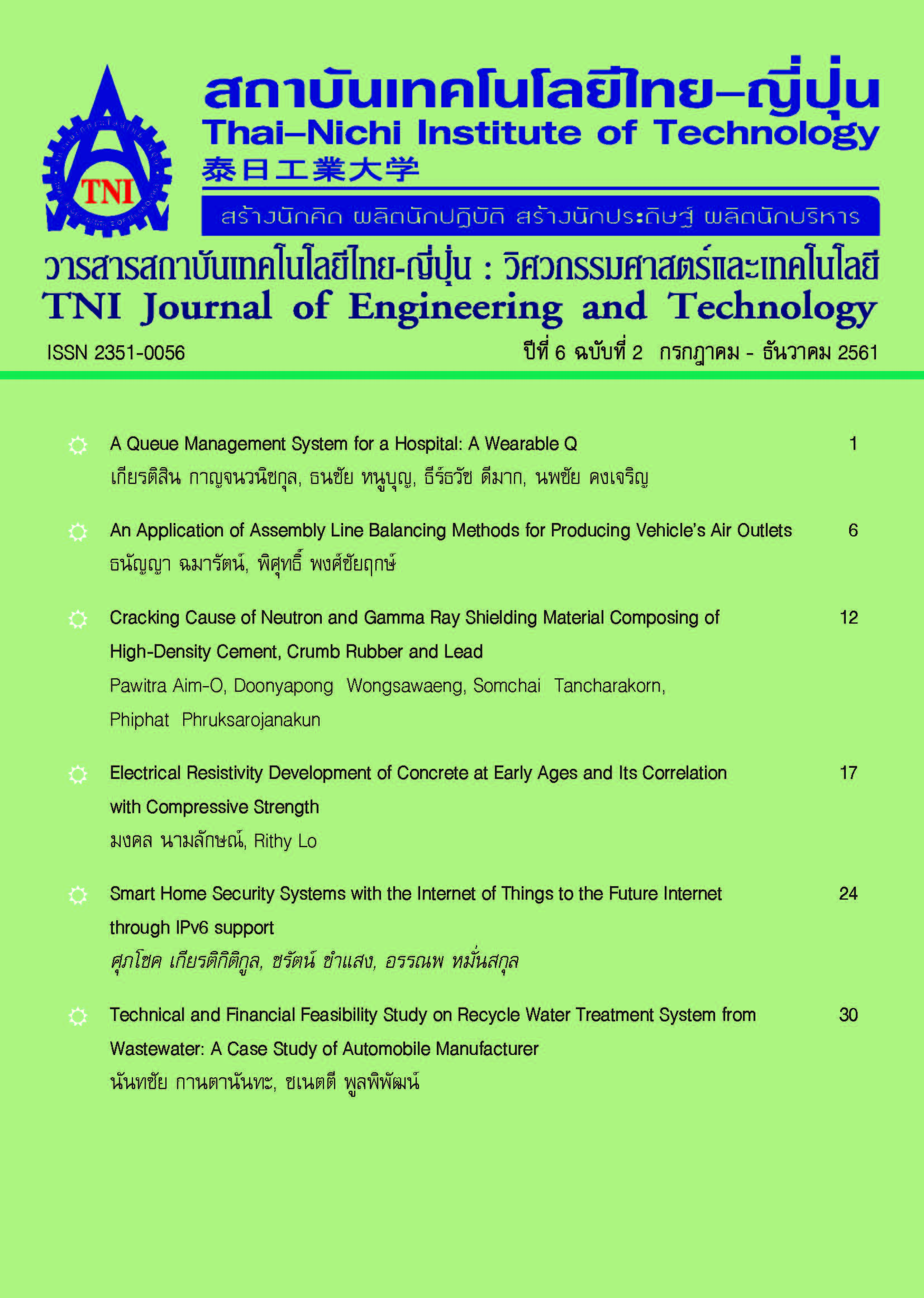An Application of Assembly Line Balancing Methods for Producing Vehicle’s Air Outlets
Main Article Content
Abstract
This research aims at improving the assembly line balance efficiencies on producing the vehicle’s air outlets in a factory. To do so, this research applies a number of assembly line balancing methods on the three production lines which have low balance efficiencies. This research finally compares the results of those methods in order to find out the most proper method for the vehicle’s air-outlet production lines in the factory. The most proper method revealed here results in the 13.3% average balance efficiency improvement from the current production.
Article Details
Article Accepting Policy
The editorial board of Thai-Nichi Institute of Technology is pleased to receive articles from lecturers and experts in the fields of engineering and technology written in Thai or English. The academic work submitted for publication must not be published in any other publication before and must not be under consideration of other journal submissions. Therefore, those interested in participating in the dissemination of work and knowledge can submit their article to the editorial board for further submission to the screening committee to consider publishing in the journal. The articles that can be published include solely research articles. Interested persons can prepare their articles by reviewing recommendations for article authors.
Copyright infringement is solely the responsibility of the author(s) of the article. Articles that have been published must be screened and reviewed for quality from qualified experts approved by the editorial board.
The text that appears within each article published in this research journal is a personal opinion of each author, nothing related to Thai-Nichi Institute of Technology, and other faculty members in the institution in any way. Responsibilities and accuracy for the content of each article are owned by each author. If there is any mistake, each author will be responsible for his/her own article(s).
The editorial board reserves the right not to bring any content, views or comments of articles in the Journal of Thai-Nichi Institute of Technology to publish before receiving permission from the authorized author(s) in writing. The published work is the copyright of the Journal of Thai-Nichi Institute of Technology.
References
M. P. Groover, Work Systems and the Methods, Measurement and Management of Work, NJ: Pearson Prentice Hall, 2007.
P. Phiphatsomporn and P. Pongchairerks, “Double Assembly Line Balancing Algorithms on Real-world Instances of Producing Digital Rice Cookers and Digital Hot Pots,” Science and Technology RMUTT Journal, vol. 5, no. 2, pp. 96–117, Dec. 2015.
B. Rekiek and A. Delchambre, Assembly Line Design: The Balancing of Mixed-Model Hybrid Assembly Lines with Genetic Algorithms, Germany: Springer, 2006.
J.K. Shim and J.G. Siegel, Operations Management, NY: Barron’s Educational Series, 1999.
S. Bhattacharya, Operations Management, Delhi: PHI Learning Private, 2014.
H.J. Weiss, “Implement Line Balancing Heuristics in Spreadsheets,” INFORMS Transactions on Education, vol. 13, no. 2, pp. 114-125, Jan. 2013.
J. Heizer and B. Render, Operations Management, 10th ed. NJ: Pearson Prentice Hall, 2011.
W. B. Helgeson and D. P. Birnie, “Assembly line balancing using ranked positional weight technique,” Journal of Industrial Engineering, vol. 12, pp. 394-398, 1961


